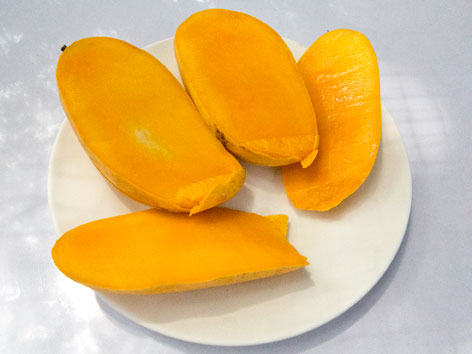Ethiopian Chicken Stew (Doro Wett)
Ethiopia
amantour
guides you to the best local dishes & drinks in
125+ cities. See map now



.jpg) Going somewhere and wish you could take all of a city’s Eat Your World info with you? With EYW’s Kindle and City Guides, you can! Don’t miss out on any local foods or drinks during your next trip.
Going somewhere and wish you could take all of a city’s Eat Your World info with you? With EYW’s Kindle and City Guides, you can! Don’t miss out on any local foods or drinks during your next trip.
EYW wants your food photos!

EYW wants your food stories!
Hey guys I am a traveler who loves to explore different places around the world. I often visit outside of Canada, So whenever I have to travel around the world I always book my flight tickets from the... Read more

What: Mangga (“mang-gah”) are Cebu’s celebrated mangoes, a versatile fruit that’s available year-round here. They are of the Philipppine carabao mango variety, cultivated and exported for their large, robust fruit and prized flavor. Unripe, they’re extremely sour and eaten as a snack or appetizer, usually with a pinch of salt or dipped into a rough paste of tiny fermented shrimp. When ripened to a sunny, succulent, aromatic golden yellow, they are eaten on their own, as a sweet topping over cakes or shaved ice, pureed into juices or shakes, or used in the no-bake cake known as mango float.
Where: Our mangoes are from a sidewalk fruit vendor who set up shop outside Matias, the popular eatery/outdoor grill on A.S. Fortuna, Mandaue City. But mangoes are everywhere in Cebu: sold in groceries and at wet markets (traditional outdoor markets called mercados, Spanish for “market”); peddled by cart-pushing ambulant vendors and random corner vendors, who set them out on woven trays. Even upmarket restaurants use them, sometimes in fruit platters for dessert (of course, any Cebuano will tell you you’re not getting value for your money that way).
When: Daily from approx. 10am-6pm/7pm
Order: Four ripe mangoes on the street, weighing about one kilo, go for Php 85. In this case, if you say you’re having lunch at Matias, the vendor will slice your mangoes up and serve them on a plate (kindly borrowed from the restaurant). These mangoes have a very skinny pit with only a little fiber that sticks to it, so generally 90% of the fruit is succulent, juicy, sweet mango flesh. The texture is close to ripe, skinned plums or peaches; a spoon will effortlessly cleave into it. Every bit is precious, so when you’re done scooping out the flesh, you’ll want to run the fibrous pit through your teeth to get every last morsel off. We found that ripe mangoes are an ideal dessert after a lunch of barbecued meats and grilled fish.
Good to know: Besides ripe carabao mangoes, keep an eye out for the small, tart, green Indian mangoes and the larger, less tart apple-mango, as well as pineapples, watermelon, and seasonal fruits. Buy a small amount to try while in the Philippines, as most of these fruits won’t keep or travel well, and certainly won’t be welcomed by customs officials. For fruity souvenirs to take home, opt for the dried stuff sold in supermarkets.
Alternatively: Drink your mango! Most restaurants and even hole-in-the-wall joints can make a decent mango shake (usually made of mango, powdered milk, sugar, and ice), and in Cebu’s sultry temperatures, a cold drink is always welcome. Or try a fresh mango juice, which is usually freshly juiced or pureed mango with some ice cubes to cool it down. Both The Tinderbox (Kasambagan, Cebu City, map) and The SandTrap Sports Bar and Restaurant (Paseo Saturnino, Banilad, map) serve refreshing glasses for around Php 120 a pop.
©2025 Eat Your World, LLC - All Rights Reserved